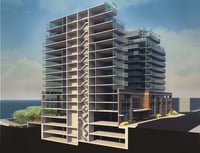Bim
BIM : What is bim architecture?
Whatever your opinion on this, the European directives are unambiguous: BIM is the way to go .
Building Information Modeling has come a long way. Born in the 70's of last century, it has to wait for about ten years to get the first implementation in the famous software provide the ArchiCAD . However, the long wait paid off and in 2014 its importance at the European level was recognized by Directive 2014/24 / EU.
The word “ standard ” is key because it provides a unique model for structuring the information that is being developed to ensure the versatility of your work. Do you work with different studios? Are you simulating a project in several programs without losing quality ? Yes, you can if you choose to use the BIM methodology.
The importance of using a common protocol is evident in the IT world. How could we exchange emails, read text files, or even just browse the web if special programs didn't speak the same language? We just couldn't. And if we think about the impact of these tools on our work (but also on our lives), then we can imagine the enormous potential associated with the use of BIM .
But how does it work?
BIM is a protocol for managing information produced in any project work, at each of its stages. This information will eliminate any software ( obviously, if implemented for BIM), because the server in the same format: IFC.ix .Thus, the design done in BIM is interoperable .
Using BIM means not only designing with programs like Revit bim architecture, but rather means: following a structured slave methodology , having access to model libraries that speed up design, allowing you to focus on what really matters, linking each phase all the information useful for various professional figures, reducing the number of unforeseen events and errors and much more. BIM will become a standard, BIM will become an optimization.
The design is then structured according to a step-by-step methodology. Each step requires specific procedures (and software that supports the IFC.ix format ) to provide a complete and accessible data structure for anyone who intervenes in the project or in future modifications.
The country that was able to demonstrate the greatest receptivity in this sense was the Netherlands, where 50% of designers switched to BIM. In Italy, only 10%, a big difference!
Of course, software that uses BIM is still limited, and of course BIM requires you to change your working methodology, but as always, when a road opens up, it's good to follow it from the start.
